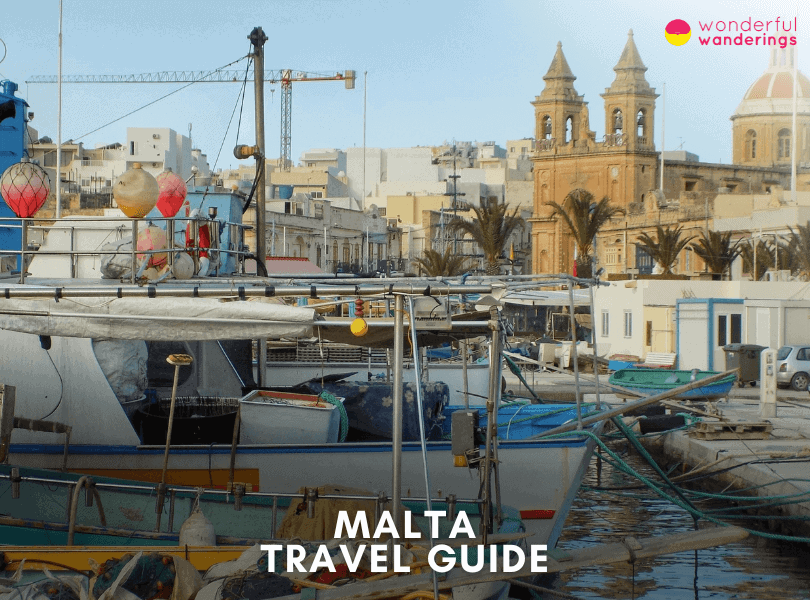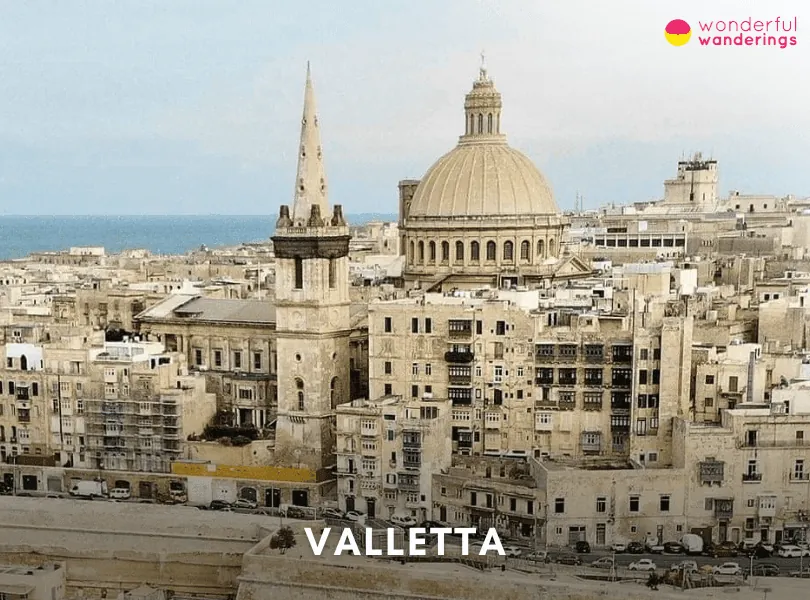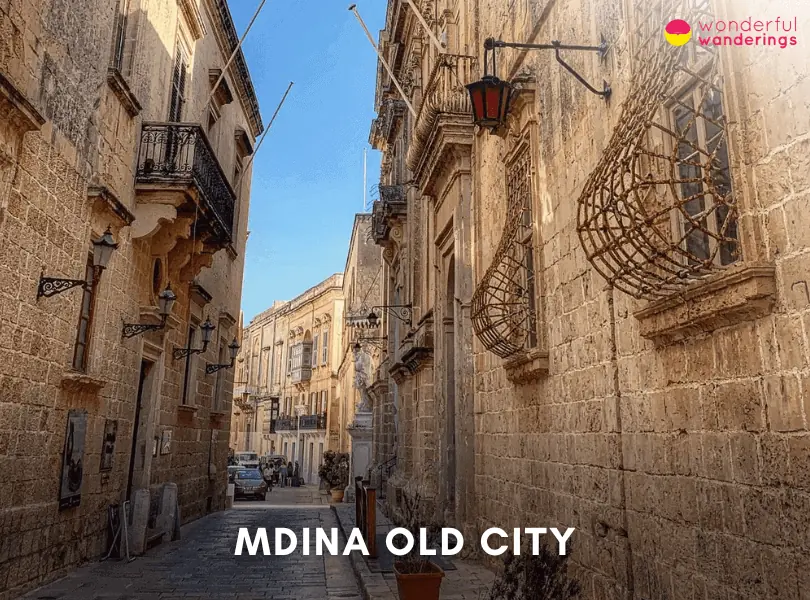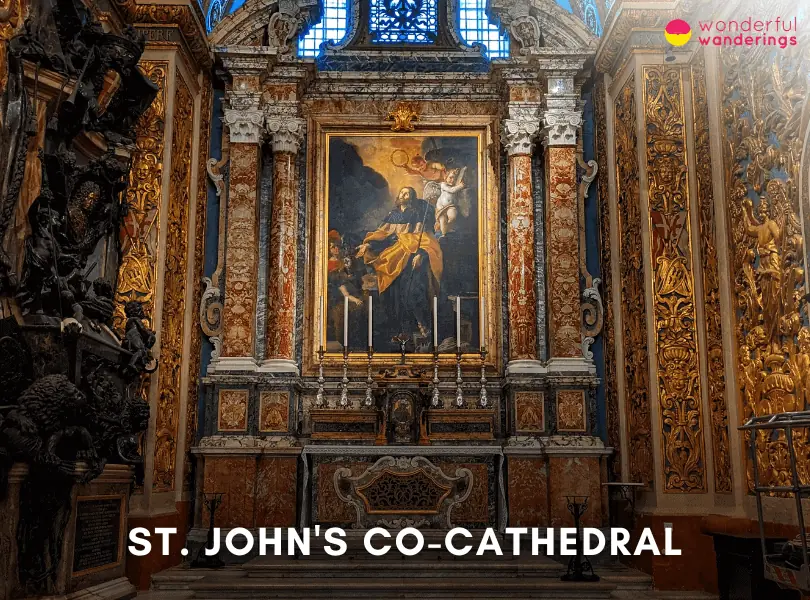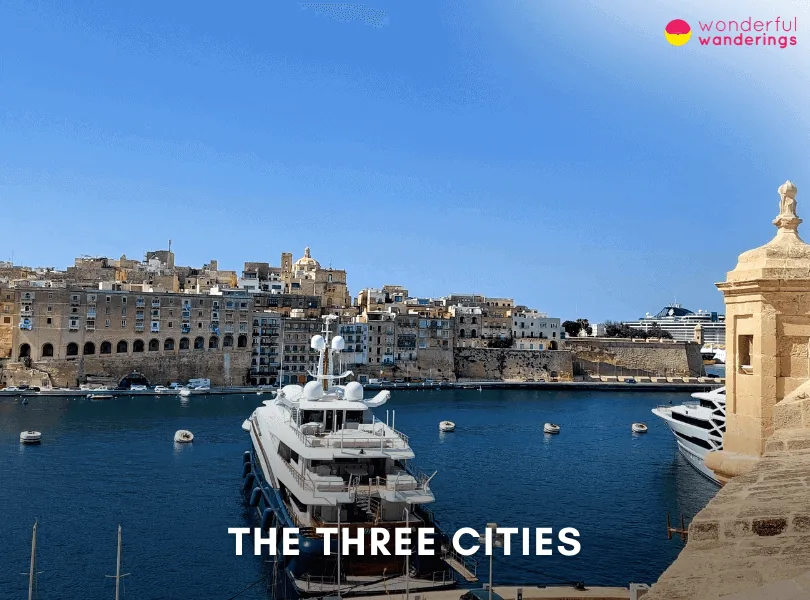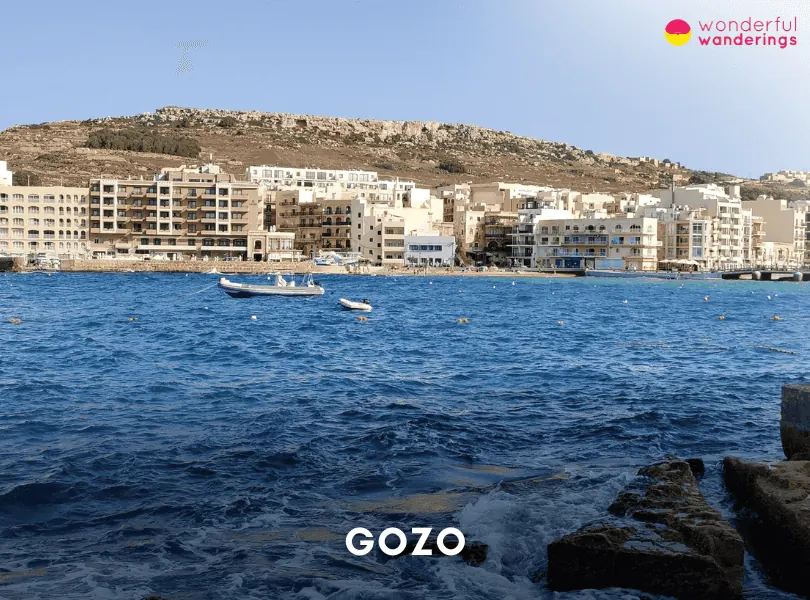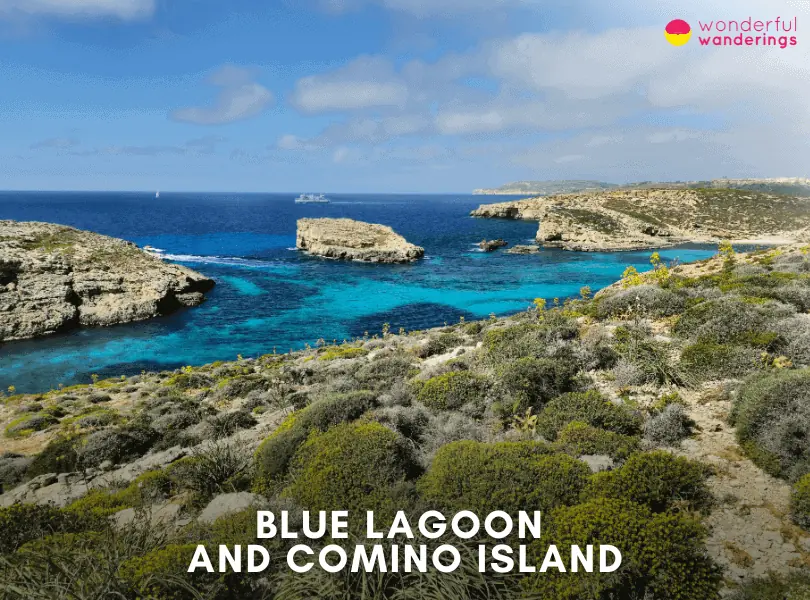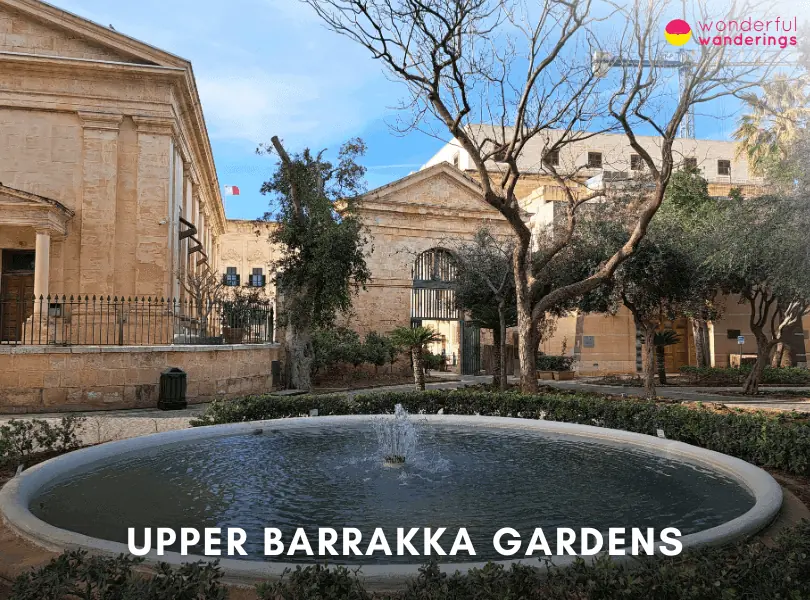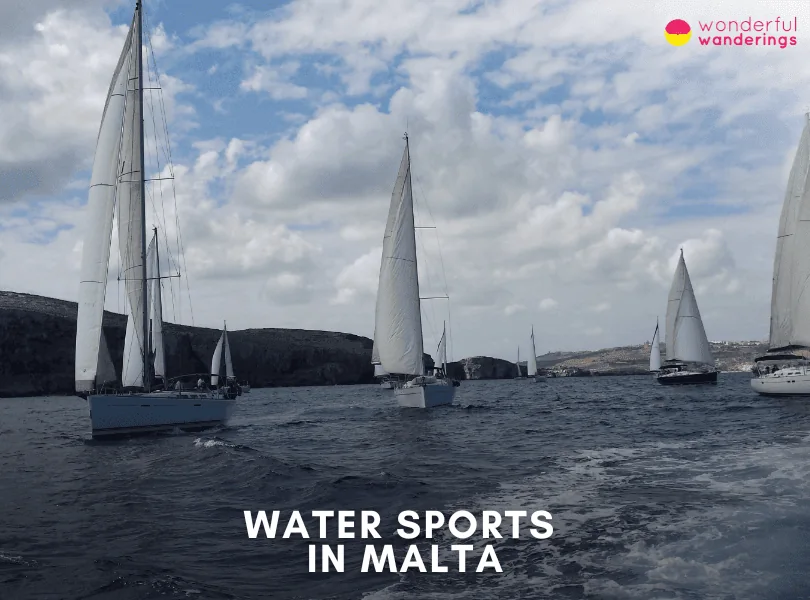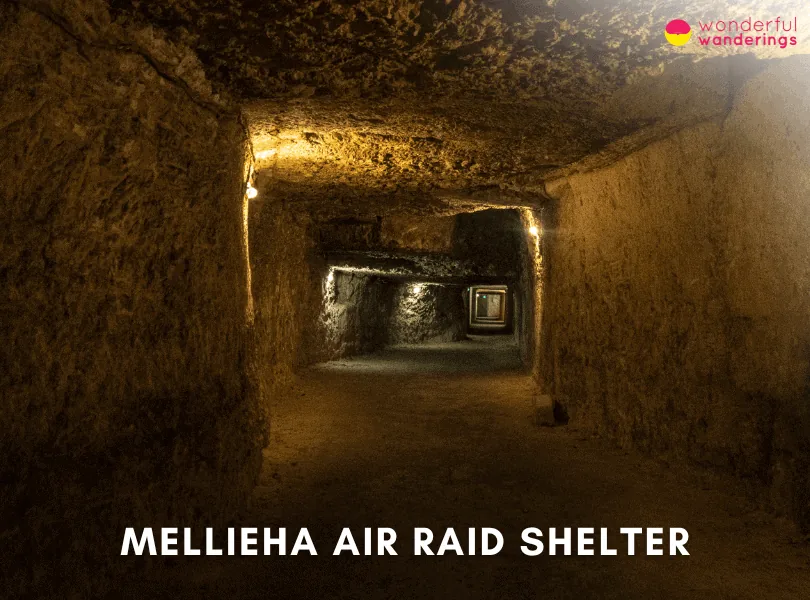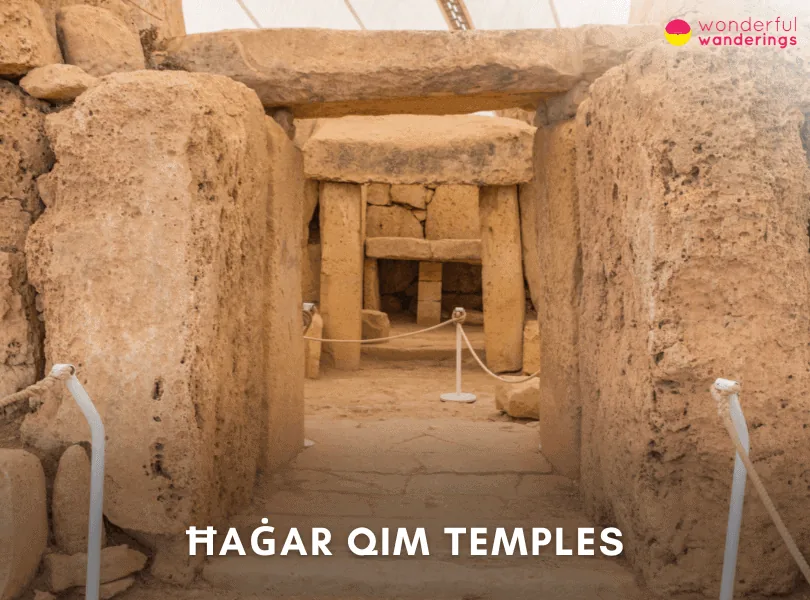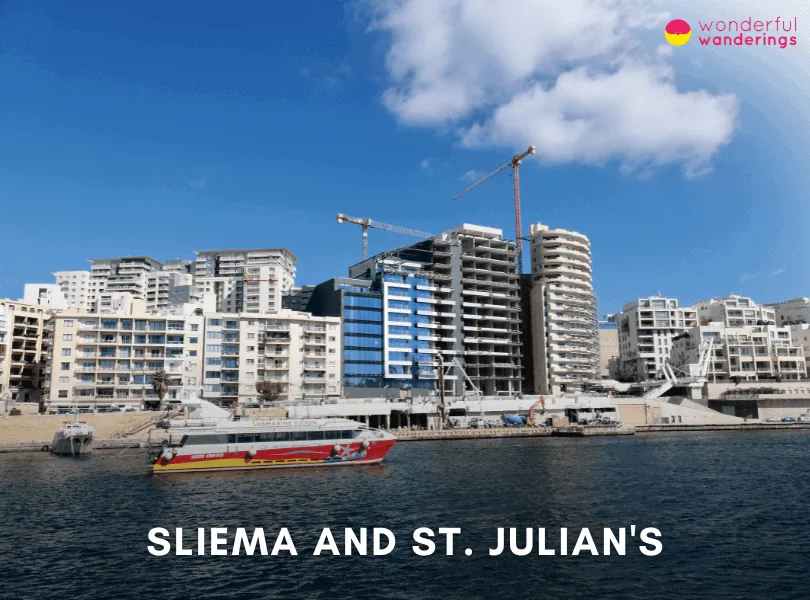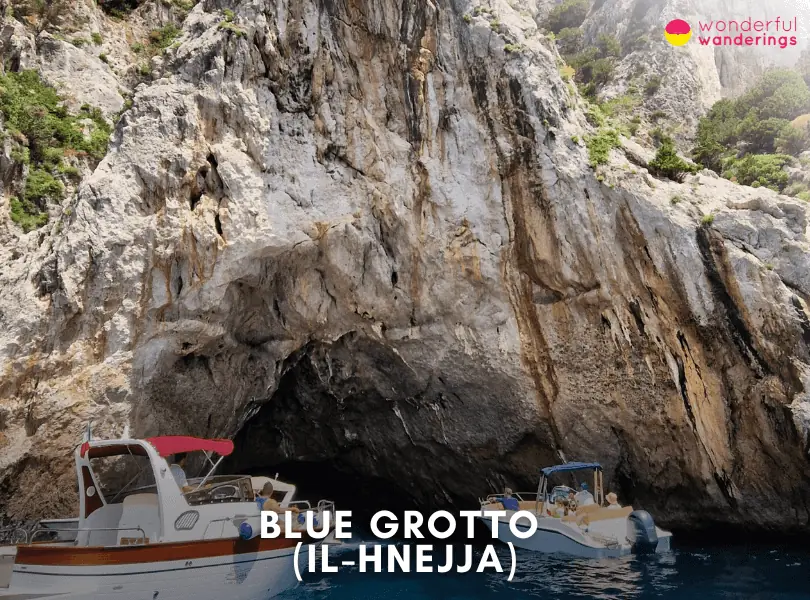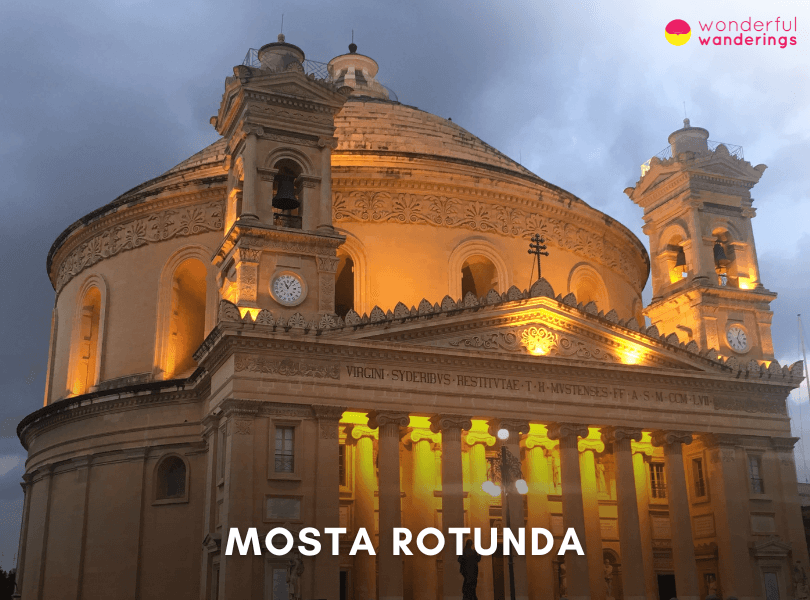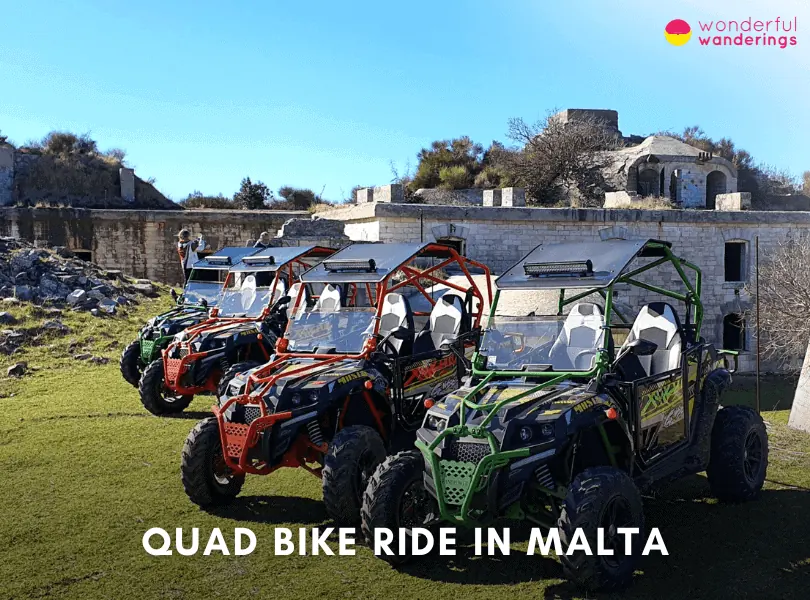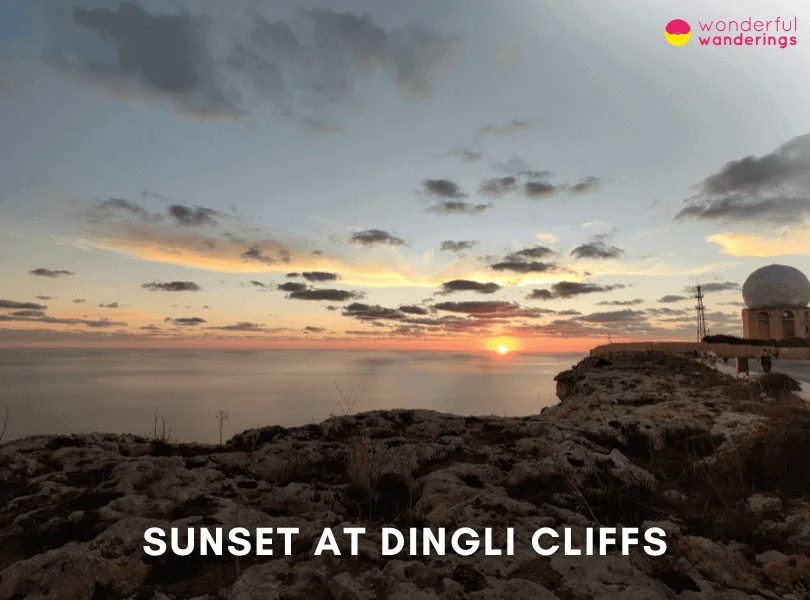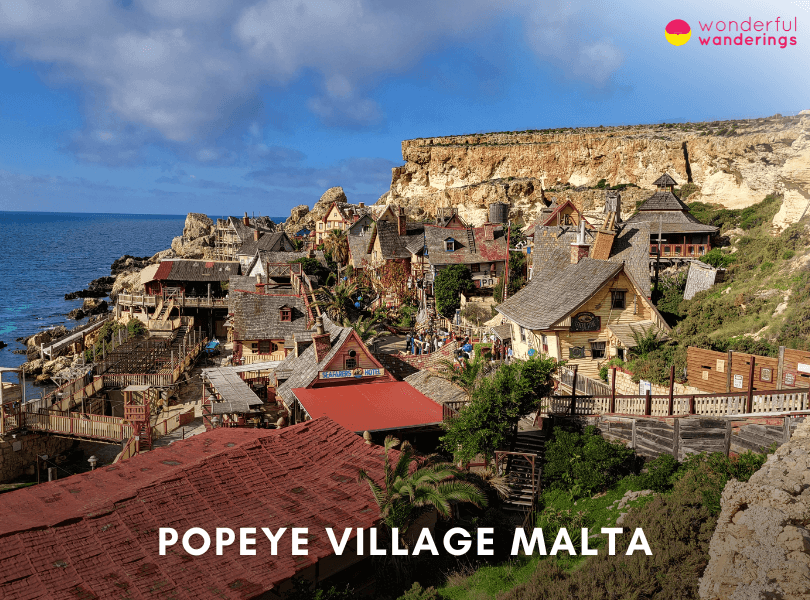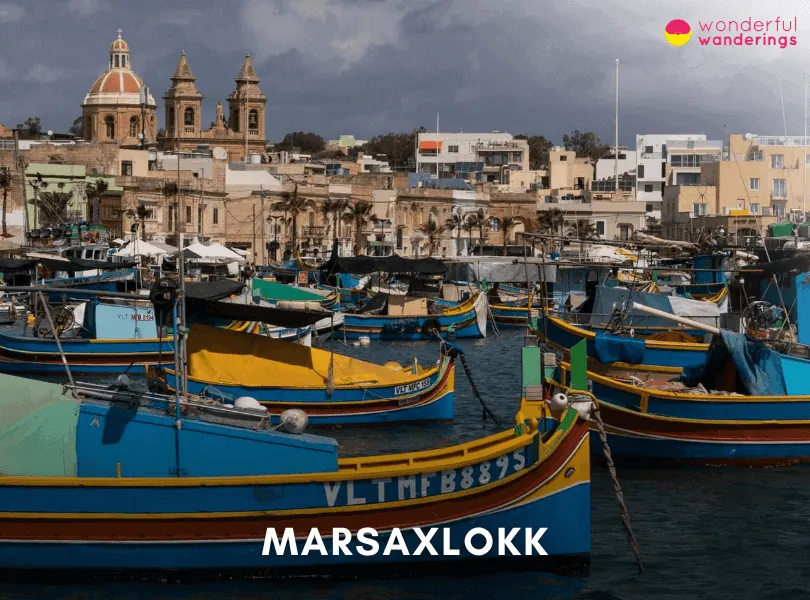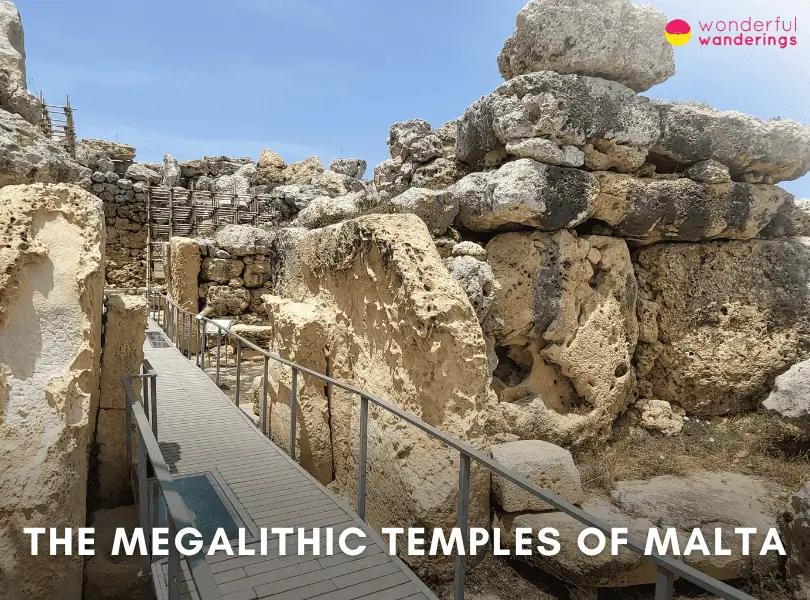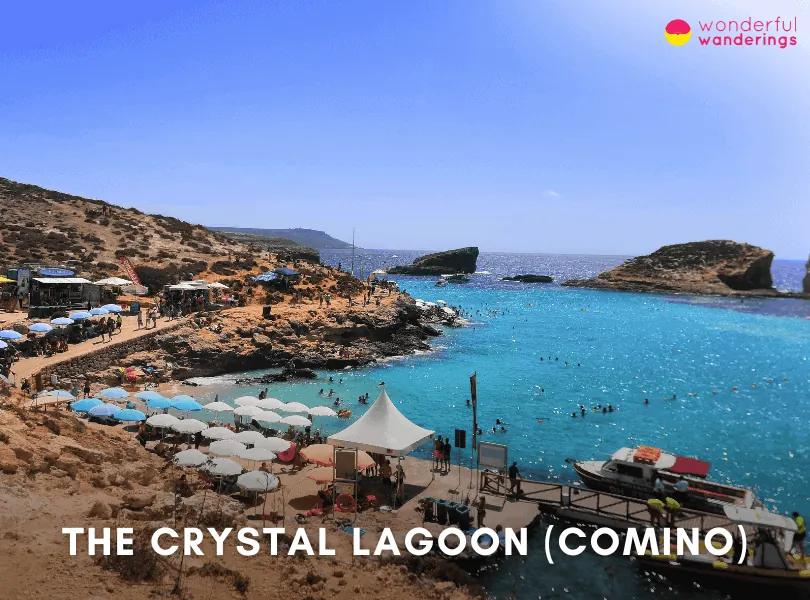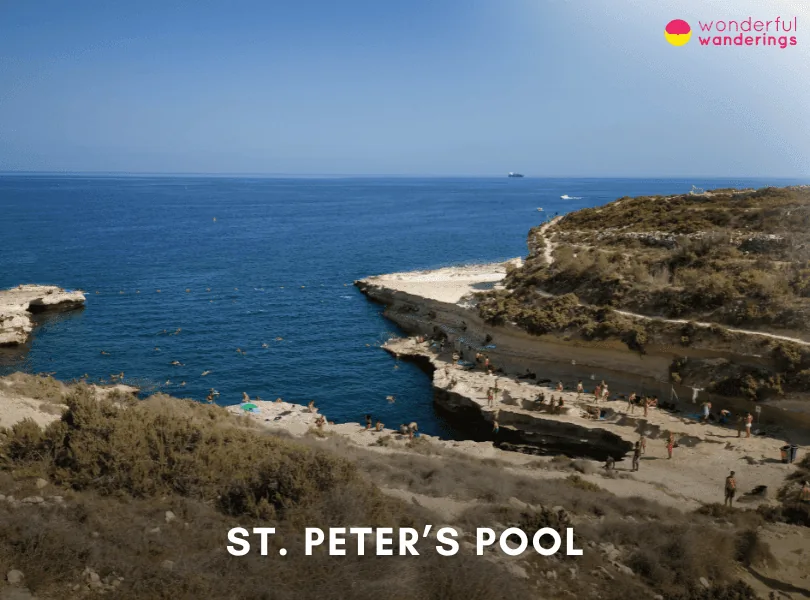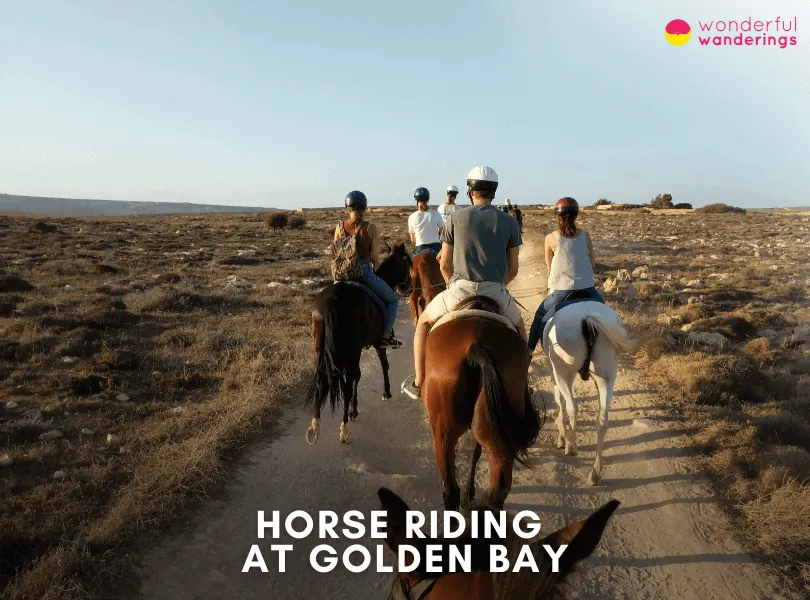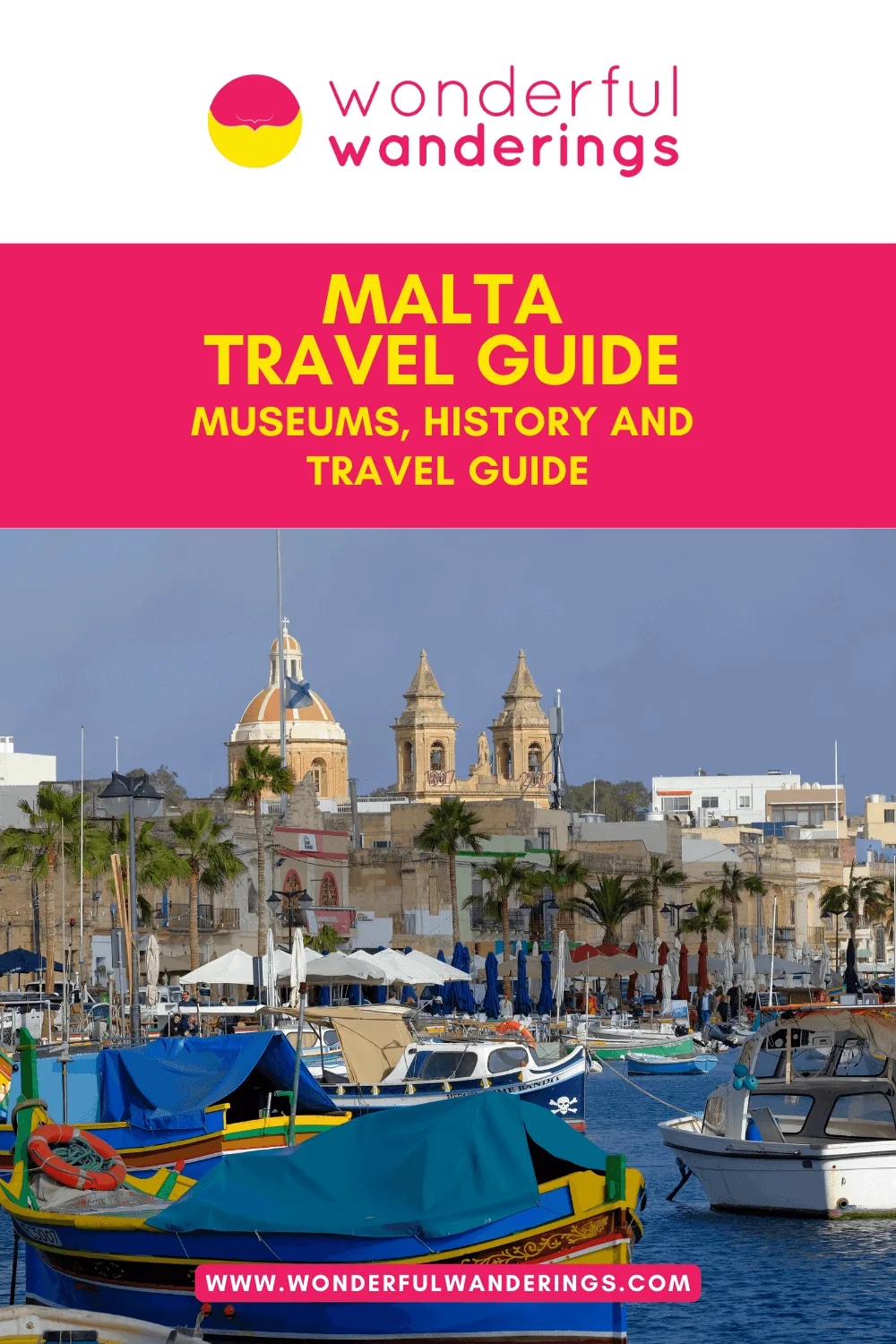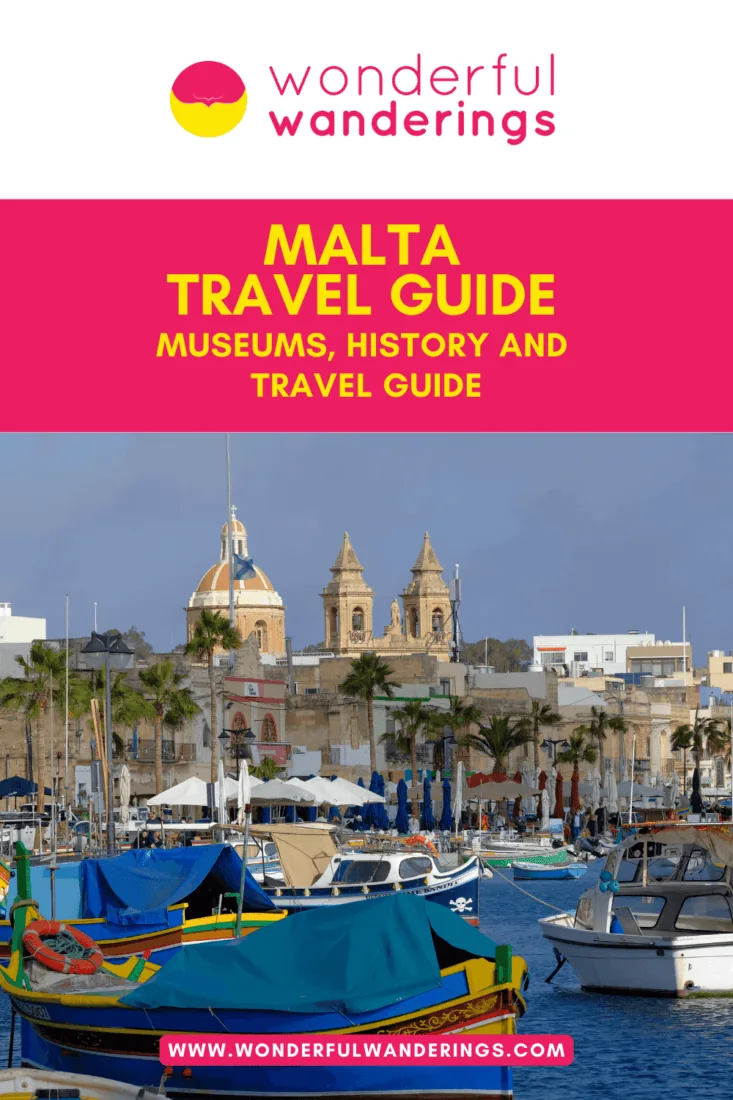Malta is an independent republic and the largest island of the Maltese archipelago. The Maltese archipelago consists of three main islands: Malta, Gozo and Comino, along with several uninhabited islands. Malta is a member of the European Union, with a total population of 483,530 residents as of 2023.
The capitals of Malta feature 16th-century Baroque architecture and over 300 historical monuments, earning their status as UNESCO World Heritage Sites. Other attractions include the medieval fortified town of Mdina, the Blue Lagoon on Comino Island and prehistoric temples like Ħaġar Qim. The three harbor towns, known as the Three Cities, provide insights into authentic Maltese life.
Visitors can enjoy various activities like water sports along the coastlines, equestrian experiences and annual cultural festivals. The cuisine of Malta highlights local specialties like pastizzi pastries, stuffat tal-fenek (rabbit stew), aljotta fish soup, fresh mahi mahi, sea bream and other Mediterranean fares. Malta blends its indigenous roots with various cultural influences into a welcoming travel destination. Malta falls under the Central European Time zone (UTC+1) and observes Central European Summer Time (UTC+2) from late March to October. Malta is in the same time zone as major European cities.
Listed below are the best things to do in Malta.
- Valletta. Valletta is the capital city of Malta, located on the Mediterranean coast. It is known for its Baroque architecture and status as a UNESCO World Heritage Site, with over 300 historical monuments. Valletta serves as an “open-air museum” and was the European Capital of Culture in 2018.
- Mdina Old City. Mdina, known as the “Silent City”, is a medieval fortified town in Malta, dating back to 4,000 years. It features narrow streets, churches, palaces and
fortified walls. Mdina was once the capital of Malta and maintained a peaceful, car-free atmosphere as the “Citta’ Notabile”, or noble city. - St. John’s Co-Cathedral. St. John’s Co-Cathedral in Valletta exhibits ornate Baroque art, including Caravaggio’s famous “Beheading of Saint John”. Its marble floor features over 400 tombs of the Knights of St. John. The cathedral offers insight into Malta’s history and is renowned for its rich artistic interior.
- The Three Cities. The Three Cities consist of Cospicua, Senglea and Birgu on the east side of Malta’s Grand Harbour. They provide authenticity with a laid-back atmosphere, sights into traditional Maltese culture and cuisine and a glimpse of contemporary life.
- Gozo. Gozo, an island near Malta, blends cultural heritage and natural beauty with attractions like Neolithic temples, beaches and hilly landscapes. It offers historical sites, outdoor activities and local culture for visitors seeking nature, history and authentic island experiences.
- Blue Lagoon and Comino Island. Comino is an uninhabited Maltese island with crystal clear waters and the famous Blue Lagoon Bay, renowned for swimming, snorkeling and seclusion. It is accessible by ferry from Malta and Gozo for water activities and coastal exploration amidst stunning scenery.
- The Upper Barrakka Gardens. The Upper Barrakka Gardens in Valletta provide panoramic views over the Grand Harbour. The gardens offer sights of history with statues and plaques, along with daily ceremonial cannon firings. The gardens serve as a peaceful public retreat.
1. Valletta
Valletta, known as Il-Belt Valletta, is the capital city of Malta, located on the Mediterranean coast. It is the southernmost capital of Europe and the smallest capital city in the European Union, covering just 0.61 square kilometers. The city’s 16th-century buildings were constructed by the Knights of St. John and it was named after Grand Master Jean Parisot de la Valette, who successfully defended the island from an Ottoman invasion during the Great Siege of Malta. Valletta is characterized by its Baroque architecture, with Mannerist, Neo-Classical and Modern architecture elements. The city is officially recognized as a UNESCO World Heritage Site. It is often referred to as an “open-air museum” due to its 320 monuments within an area of 0.55 sq. kilometers (0.22 sq. miles), making it one of the most concentrated historic areas in the world.
Valletta was chosen as the European Capital of Culture in 2018 and is known as the sunniest city in Europe. The city is known for its cultural significance, Baroque architecture and cultural scene, allowing visitors to explore numerous historical monuments, palaces, gardens, churches, museums, art galleries and events throughout the year. Valletta is accessible by various means of transportation, including buses, ferries and taxis and is suitable for history and architecture enthusiasts, art and culture lovers and anyone interested in exploring a compact and historically rich city. There is no specific admission cost for entering Valletta as it is a city open to the public. Some attractions within the city may have individual admission fees.
2. Mdina Old City
Mdina Old City, known as the “Silent City”, is a fortified medieval town in Malta’s northern region. Mdina has been a place of great strategic importance throughout Malta’s past, dating back over 4,000 years. The city is characterized by its narrow streets, ornate churches, grand palaces and fortified walls, offering a glimpse into Malta’s history. Mdina is known as the Citta’ Notabile, meaning noble city and was once the capital of Malta. The name “Silent City” originated when the capital was moved out of Mdina, leaving it uninhabited and giving it a ghost town-like atmosphere. Mdina Old City maintains its peaceful atmosphere, with no cars allowed within its walls, contributing to its ambiance.
Visitors to Mdina can explore its historic streets, walk along the city walls for panoramic views, visit St. Paul’s Cathedral, discover the Palazzo Falson Historic House Museum, wander through the narrow alleys and take guided walking tours to delve deeper into its past. The entrance to Mdina is free of charge. Some attractions within the city may have individual entrance fees. Mdina is easily accessible by bus from various locations in Malta, making it a must-see highlight for any visit to the Mediterranean island nation. Mdina Old City is perfect for history and architecture enthusiasts and anyone who wants to experience and learn the history of Malta.
3. St. John’s Co-Cathedral
St. John’s Co-Cathedral, located in Valletta, Malta, is an example of Baroque architecture and a significant religious site. The cathedral, known as Kon-Katidral ta’ San Ġwann, was built by the Knights of St. John between 1572 and 1577. It was dedicated to St. John the Baptist and served as the conventual church of the Knights. The cathedral is renowned for its rich interior adorned with intricate Baroque art, including the famous painting “The Beheading of Saint John the Baptist” by Caravaggio. The floor of the cathedral is covered with over 400 marble tomb slabs commemorating the knights and officers of the Order of St. John.
Visitors can explore the interior, marvel at the artistic masterpieces and learn about the history and significance of the cathedral. St. John’s Co-Cathedral is easily accessible in the center of Valletta and is perfect for history enthusiasts, art lovers and those interested in religious and cultural heritage. The admission cost for the cathedral is €15 ($16, £12) for adults, with discounts for students, seniors and children.
4. The Three Cities
The Three Cities in Malta, consisting of Cospicua (or Bormla), Senglea (Isla) and Birgu (or Vittoriosa), offer a great insight into Maltese history along with a glimpse of contemporary life. The Three Cities are located in Malta, near the capital city of Valletta. Cospicua, Senglea and Birgu are situated on the eastern side of the Grand Harbour, adjacent to Valletta. These small towns preserve their authenticity and provide a laid-back atmosphere, allowing visitors to experience traditional Malta. The area is rich in history and offers a unique opportunity to explore the “old days” spirit many locals rave about.
Visitors to the Three Cities can explore the rich history, enjoy the laid-back atmosphere and experience traditional Maltese culture. The area offers various historical sites, picturesque streets and a glimpse of contemporary life. Visitors can enjoy the views of the Grand Harbour and explore the local cuisine and traditions. The Three Cities are easily accessible from Valletta by land or water transport. Visitors can take a ferry from Valletta to the Three Cities or use public transportation to reach the area. The Three Cities are ideal for visitors interested in history, culture and traditional experiences. There is no specific admission cost for entering the Three Cities, as it is an area to be explored and experienced freely. Some historical sites or attractions within the Three Cities may have individual admission fees.
5. Gozo
Gozo is an island in the Mediterranean Sea, known for its rich history, Neolithic temples and landscapes. Gozo is located 6 kilometers (3.7 miles) northwest of Malta. Gozo offers a diverse range of attractions, including historical sites, beaches and hilly terrain. The island provides a blend of cultural heritage and natural beauty, making it an attractive destination for visitors.
Visitors to Gozo can explore historical sites, such as the Neolithic temples, enjoy the island’s beaches and experience its hilly terrain. The island also offers opportunities for outdoor activities, including hiking, diving and exploring the local culture and traditions. Visitors can explore Gozo through guided tours or public transportation on the island. Gozo is perfect for visitors interested in history, nature and outdoor activities. It is an ideal destination for those seeking a blend of cultural heritage and natural landscapes. There is no specific admission cost for entering Gozo, as it is an island to be explored freely. Some historical sites or attractions on the island may have individual admission fees.
6. Blue Lagoon and Comino Island
The Blue Lagoon and Comino Island are known for their crystal-clear waters, secluded beaches and stunning natural scenery. Comino is a small uninhabited island between Malta’s main island and Gozo. It is a popular destination for snorkeling, diving and swimming. The island is home to the famous Blue Lagoon, a bay that is a must-see for any visitor to the area. The Blue Lagoon is characterized by its turquoise waters and rock formations, making it a must-visit destination.
Visitors can enjoy snorkeling, swimming and exploring sea caves. The area is accessible via ferry services and boat trips from various locations in Malta and Gozo. The ferry ride or boat trip offers panoramic views of the surrounding areas and the Mediterranean Sea. The Blue Lagoon and Comino Island are best suited for individuals interested in water activities and coastal exploration. The cost of a ferry or boat trip to the Blue Lagoon in Malta starts at €25 ($27, £21) per person, with various options available for different experiences, including private boat rentals and day trips. The best times to visit Comino are during the months of April to May and October to November, when there are fewer tourists, allowing for a more enjoyable and less crowded experience.
7. Upper Barrakka Gardens
The Upper Barrakka Gardens, located in Valletta, Malta, offers an escape from the bustling city. Perched atop the Grand Harbour, these gardens were originally the private gardens and exercise grounds of the Knights of the langue of Italy, dating back to 1661. The gardens provide panoramic views of the Grand Harbour and the Three Cities, making it an ideal spot to relax and enjoy the scenery.
Visitors can explore a collection of busts, statues and plaques that denote various personalities and significant events in Maltese history. The gardens feature the Saluting Battery, where ceremonial cannon firings take place daily and the Upper Barrakka Lift, offering quick access to the city center. The gardens are open daily and are freely accessible to the public. Visitors can walk into Valletta through the main city gates and follow specific directions to Castille Place, where the entrance to the gardens is located. The Upper Barrakka Gardens are ideal for tourists seeking a peaceful retreat, panoramic views and a glimpse into Maltese history and culture. There is no admission cost for entering the Upper Barrakka Gardens, as they are freely accessible.
8. Water sports in Malta
Water sports in Malta offer a diverse range of activities in the crystal-clear and warm Mediterranean waters. Visitors can enjoy various water sports, including scuba diving, snorkeling, windsurfing, kayaking, parasailing, jet skiing and sailing. The Maltese Islands provide an ideal environment for water activities, with warm waters and excellent visibility, making it a top destination for scuba diving.
The coastline offers opportunities for exploring caves, cliffs and bays, while the calm waters are suitable for snorkeling and other water sports. Many seaside towns in Malta have professional diving centers, ensuring a safe and enjoyable experience for beginners and experienced divers. The water sports activities cater to a wide range of interests and skill levels, making them suitable for individuals, families and adventure enthusiasts. The cost of participating in water sports activities may vary depending on the specific activity and service provider, with options available for rentals, guided tours and lessons. The accessibility and favorable weather conditions make Malta an attractive destination for water sports enthusiasts throughout the year, offering a memorable and thrilling experience for visitors of all ages.
9. Mellieha Air Raid Shelter
The Mellieha Air Raid Shelter, known as the Mellieha World War II Shelters, is a significant historical site in Mellieha, Malta. It is an air raid shelter that runs under Our Lady of Victory, the parish church of Mellieha. The shelter is one of the largest underground shelters in Malta, with a depth of 12m and a length of around 500m, providing a haunting sense of what it was like to shelter during World War II.
Visitors can explore the extensive labyrinth of passages, displays and reconstructions that tell the story of the shelters and the daily life of the people who sought refuge there. The shelter provides insight into the island’s history during the war and the resilience of the Maltese population. The site is open to the public and visitors can gain access by purchasing tickets at a cost of €2.40 ($2.63, £2.08) each. The Mellieha Air Raid Shelter is ideal for history enthusiasts, families and individuals interested in wartime history and the experiences of civilians during World War II. The shelter offers an opportunity to learn about Malta’s role in the war and the challenges faced by its inhabitants, making it a compelling and educational experience for visitors.
10. Ħaġar Qim Temples
The Ħaġar Qim Temples, a megalithic temple complex in Malta, are among the most ancient religious sites on the island, dating from 3600 to 3200 BC. Recognized as a UNESCO World Heritage Site, these unique architectural masterpieces are characterized by their well-preserved ruins and distinctive architectural features. The complex is located on the southern edge of the island of Malta, on a ridge capped in soft globigerina limestone. The builders used this stone throughout the temple architecture and the site’s megalithic structures are associated with fertility rituals, solar alignments and possible use by oracles.
Visitors can explore the megalithic complex, which includes a main temple and three additional structures and gain insight into the island’s prehistoric heritage. The Ħaġar Qim Temples are accessible by road and are best suited for history enthusiasts and individuals interested in ancient civilizations. The admission cost for entering the Ħaġar Qim Temples is €10 ($10, £8) per person.
11. Sliema and St. Julian’s
Sliema and St. Julian’s are two neighboring villages located in Malta. Sliema, a seaside town in the North of Malta, was once a small fishing village that became a popular tourist destination and one of the island’s busiest commercial and urban hubs. It is known for its long promenade, stone beaches and bustling commercial activity, offering a mix of residential and commercial areas, restaurants, cafes and shops. St. Julian’s, named after the town’s patron saint, is known as Malta’s party capital, with a plethora of lively bars and clubs, bays, malls and nightlife. The villages offer a beautiful microcosm of Maltese culture and are popular with water enthusiasts, art lovers and history buffs.
Visitors can enjoy the beaches, explore the local art scene, take boat rides and experience Malta’s nightlife. The admission cost to the attractions in Sliema and St. Julian’s varies and some activities may be free, such as walking along the promenades.
12. Blue Grotto (Il-Hnejja)
The Blue Grotto (Il-Hnejja) is a sea cave on Malta’s southern coast, 2 kilometers (1.2 miles) south of Wied iz-Zurrieq fishing village near the town of Qrendi. Blue Grotto is referred to as the Blue Cave, as it features a massive 30-meter limestone arch over a cavern with a sand seabed inside. The Blue Grotto is famous for the colors of blue and green light that illuminate the cave.
Blue Grotto can be visited by boat tours departing from Wied iż-Żurrieq harbor, which take visitors inside the cave as well as several other nearby sea grottos. Visitors can see the arch and coastal views from a free public viewing platform located just east of the harbor. The Blue Grotto attracts visitors of all ages. The activity is best for nature lovers, photographers and those interested in experiencing the natural beauty of Malta’s coastline. Swimming inside the Blue Grotto is forbidden due to safety reasons and visitors are advised to follow the instructions of the boat guides for a safe and enjoyable experience. The best time to visit the Blue Grotto is in the morning when the sunlight is bright and the cave is open to visitors from 9 am to 5 pm.
13. Mosta Rotunda
The Rotunda of Mosta, known as the Sanctuary Basilica of the Assumption of Our Lady, is a prominent church in Mosta, Malta. It is known for its massive dome, the third-largest unsupported dome in the world and a significant symbol of the town. The church was built between 1833 and the 1860s to designs of Giorgio Grognet de Vassé and it is dedicated to the Assumption of Our Lady. The Rotunda of Mosta has a rich history and it narrowly avoided destruction during World War II when a German aerial bomb pierced the dome but failed to explode, an event interpreted as a miracle by the Maltese. The church is a popular tourist attraction and a place of worship and it holds the feast of the Assumption on 15 August, a public holiday in Malta. Visitors can explore the interior of Mosta Rotunda and learn about its history and architecture.
It is a place of worship and a popular tourist attraction, attracting visitors from around the world to admire its architecture and learn about its remarkable story. The church is open to the public and there is no admission cost to enter, making it accessible to all who wish to experience its beauty and history.
14. Quad bike ride in Malta
Quad biking is a popular and thrilling activity in Malta, offering visitors the opportunity to explore the islands in an exciting and adventurous way. One of the notable locations for quad biking is in Gozo, an island near Malta.
The full-day quad bike tour starts at Mgarr Harbour in Gozo and lasts for 6+ hours, including pickup and drop-off. Participants ride state-of-the-art 570cc (ATV) vehicles, traversing different terrains and discovering Gozo’s natural beauty and top sights, including hidden gems and off-road paths. The tour is led by expert drivers who provide information at each stop and includes a boat crossing to Gozo, a pass-by tour of Comino caves (weather permitting) and a traditional Gozitan lunch. Safety equipment, insurance and fuel are provided and the activity is best for adventure enthusiasts and those who want to experience the islands’ landscapes. The cost of the tour starts from €92.50 ($100.94, £79.86) per person and a driver must be at least 21 years old with a valid driving license. The meeting point is at Yippee Malta in Ghajnsielem and the tour offers a cancellation policy and weather guarantee for a hassle-free experience.
15. Sunset at Dingli Cliffs
The Dingli Cliffs, located on the southwest coast of Malta near the village of Dingli, offer a panoramic view of the Mediterranean Sea and is known for being the highest point in Malta, reaching roughly 250 meters above sea level. The cliffs stretch for over 2 kilometers (1.2 miles) from Bahrija to Mungar, with a road and walking footpath running for the majority of its length. The area is ideal for sunsets and enjoying a hike at the highest point in Malta.
Visitors can access the cliffs by car, private tour or bus, with the nearest bus stop called Maddalena at Ħad-Dingli, right near the Saint Mary Magdalene Chapel. There are several great vantage points to watch the sunset, including the St. Mary Magdalene Chapel, the Radar ‘Il Ballun’, and the Dingli Cliffs Viewpoint, each offering a panoramic view. Visitors can embark on a long coastal hike from the cliffs to the famous Blue Grotto, following the coastal heritage trail. The Dingli Cliffs provide an unforgettable experience for nature enthusiasts, hikers and visitors who want to witness the beauty of a Mediterranean sunset. Admission to the Dingli Cliffs is free, making it accessible to all who wish to enjoy this natural wonder.
16. Popeye Village Malta
Popeye Village, known as Sweethaven Village, is a popular tourist attraction in Malta. Popeye Village is located in Anchor Bay, near Mellieha, Malta. It was originally built as the film set for the 1980 musical production “Popeye” and is located in Anchor Bay, just three kilometers from the village of Mellieha. The village consists of nineteen wooden buildings and has been converted into an open-air museum and family entertainment complex.
Visitors to Popeye Village can explore the film set, interact with characters and participate in filming experiences. The village offers various attractions and entertainment for children and adults, such as boat rides, water activities and live shows. The village is ideal for hosting events, parties and unique wedding ceremonies by the sea. The admission cost for Popeye Village varies depending on the season and the package—visitors 16 and under need to be accompanied by an adult. Tickets can be purchased online or at the village entrance and prices include access to various activities and attractions. Popeye Village is ideal for families, children and anyone interested in film history and entertainment.
17. Marsaxlokk
Marsaxlokk is a traditional fishing village located in the southeastern part of Malta. It is known for its harbor, colorful fishing boats and bustling fish market. The village has a relaxed and authentic atmosphere, offering visitors a glimpse into the local way of life. The waterfront is lined with seafood restaurants and cafes, where visitors can enjoy fresh seafood and beautiful views of the harbor. Marsaxlokk is famous for its Sunday fish market, where local fishermen sell their catch of the day and visitors can browse a variety of fresh fish, shellfish and local produce.
Visitors to Marsaxlokk can explore the picturesque harbor, stroll along the waterfront and visit the fish market. The village is ideal for enjoying fresh seafood at the local restaurants, taking boat trips and experiencing the authentic Maltese culture. Marsaxlokk is accessible by car and public transport. Visitors can drive to the village and park in the designated parking areas near the harbor. The village is served by several bus routes, including the 81 and 85, which connect Marsaxlokk to Valletta and other major towns in Marsaxlokk. It is best suited for visitors interested in traditional Maltese culture, fishing and seafood. The village offers a unique and authentic experience, making it an ideal destination for food enthusiasts, photographers and anyone seeking a relaxed setting. There is no admission cost for visiting Marsaxlokk, as it is a public village and the attractions are primarily the natural and cultural features of the area. Visitors should bring money for parking, dining and purchases at the fish market or local shops.
18. The Megalithic Temples of Malta
The Megalithic Temples of Malta are a collection of prehistoric temple complexes, some of which are among the oldest free-standing structures in the world. The Megalithic Temples of Malta are located on the islands of Malta and Gozo. The temples are distributed across various sites, including Ħaġar Qim, Mnajdra, Tarxien and Ggantija. These megalithic structures are located on the islands of Malta and Gozo and they are believed to have been built between 3600 BC and 700 BC. The temples are renowned for their unique architecture, which features massive stone blocks and intricate carvings. The museums are significant for Malta’s cultural and historical importance, providing insights into the religious practices and social organization of the ancient inhabitants of the Maltese islands.
Visitors to the Megalithic Temples of Malta can explore the various temple complexes, learn about their history and significance and admire the ancient architecture and carvings. The sites often feature visitor centers with exhibitions, audiovisual presentations and guided tours to enhance the visitor experience. The Megalithic Temples of Malta are best suited for history enthusiasts, archaeology buffs and anyone interested in ancient civilizations and architecture. The sites offer an opportunity to explore and learn about the Neolithic period and the remarkable achievements of Malta’s ancient inhabitants. The admission cost for the Megalithic Temples of Malta varies by site and visitor category.
19. The Crystal Lagoon (Comino)
The Crystal Lagoon, known as the Blue Lagoon, is a breathtaking natural attraction on the small island of Comino, part of the Maltese archipelago. It is renowned for its crystal-clear turquoise waters, white sandy seabed and stunning surrounding cliffs. The lagoon is a popular destination for swimming, snorkeling and sunbathing, offering visitors a tranquil and picturesque setting to relax and enjoy the natural beauty of the Mediterranean.
Visitors to the Crystal Lagoon can swim and snorkel in the clear waters, sunbathe on the sandy seabed and explore the lagoon’s surroundings. Boat trips and water sports activities, such as kayaking and paddleboarding, are available for visitors seeking adventure. The lagoon is a popular destination for day trips and excursions, offering a unique and memorable experience for nature lovers and beach enthusiasts. The Crystal Lagoon suits nature lovers, beachgoers and water sports enthusiasts best. The crystal-clear waters and scenic landscapes appeal to visitors of all ages, making it a popular attraction for families, couples and solo travelers. There is no admission cost for visiting the Crystal Lagoon, as it is a natural attraction and does not require an entrance fee. It is recommended to bring food, water and sunscreen, as the island has limited facilities and services.
20. St. Peter’s Pool
St. Peter’s Pool is a natural swimming pool located near the fishing village of Marsaxlokk on the southeastern coast of Malta. It is known for its crystal-clear azure blue and turquoise waters and its perfect swimming pool shape formed by the surrounding rocks. The pool is a popular destination for swimming, sunbathing and cliff jumping, offering visitors a unique and picturesque setting to relax and enjoy the natural beauty of the Mediterranean.
St. Peter’s Pool visitors can swim, sunbathe and cliff jump in the clear waters. The pool is a popular spot for snorkeling, offering opportunities to observe the diverse marine life and underwater landscapes. The surrounding area provides ample space for relaxation and picnicking, making it a perfect destination for a day of leisure and enjoyment. St. Peter’s Pool is best suited for nature lovers, swimmers and adventure enthusiasts. The pool’s natural beauty and environment make it an ideal destination for relaxation and water activities. The cliff-jumping spots appeal to thrill-seekers, while the clear waters and marine life attract snorkeling enthusiasts. There is no admission cost for visiting St. Peter’s Pool, as it is a natural attraction and does not require an entrance fee.
21. Horse Riding at Golden Bay
Golden Bay Horse Riding offers an equestrian experience at Golden Bay, located on Malta’s northwestern coast. The riding center provides guided horseback tours along the sandy beach and trails, allowing visitors to explore the area’s natural beauty on horseback. The center caters to riders of all levels, from beginners to experienced equestrians and offers well-trained horses and professional guides to ensure a safe and enjoyable riding experience.
Visitors to Golden Bay Horse Riding can enjoy guided horseback tours along the sandy beach and scenic trails, allowing them to experience the beauty of Golden Bay and its surroundings from a unique vantage point. The center offers riding lessons for beginners, more experienced riders and special packages for families and groups. The riding center provides horse care and stabling facilities, creating a welcoming environment for riders and horses. Golden Bay Horse Riding is ideal for horse riding enthusiasts, nature lovers and families. The center’s guided tours and riding lessons cater to riders of all levels, making it an ideal destination for beginners and experienced equestrians. The stunning natural surroundings and beachfront location provide a memorable and scenic setting for horseback riding. The admission cost for Golden Bay Horse Riding varies depending on the type of experience or package selected. Special packages for families and groups are available and it is recommended to contact the riding center directly for the most up-to-date pricing and booking information.
What are the best museums to visit in Malta?
Listed below are the best museums to visit in Malta.
- The National Museum of Archaeology. The National Museum of Archaeology, located on Republic Street, Valletta, Malta, displays artifacts from 5200 BCE to 2500 BCE. The museum features figurines, pottery, stone tools and more from Malta’s prehistoric cultures, like the Ħagar Qim and Tarxien Temple periods. Highlights include the Sleeping Lady statuette and dagger of Grandmaster Jean de Valette. Admission to the museum costs €10 ($10, £8) per person.
- Għar Dalam Cave & Museum. Għar Dalam Cave & Museum inTriq Għar Dalam, Birżebbuġa, Malta, contains important Neolithic archaeological sites and bone deposits of extinct animal species. The 144-meter natural cave features skeletal remains of hippos and elephants and evidence of the first humans in Malta from 7400 years ago. The onsite museum exhibits these fascinating specimens and artifacts found within the cave. Admission to explore the cave and museum is €5 ($5, £4) per person.
- MUŻA. MUŻA is a modern art museum that features invaluable artworks from the medieval period to the present day by local and international artists. MUŻA is located at Auberge D’Italie, Merchants Street, Valletta, Malta. The museum is set within an ornate 18th-century knight’s palace. The museum uses interactive installations next to centuries-old paintings and sculptures. Admission to the modern museum costs €10 ($10, £8) per person.
- Malta Maritime Museum. Malta Maritime Museum in Xatt il-Forn, Birgu in Malta, housed Malta’s first industrial building on the Birgu waterfront; the Malta Maritime Museum contains over 20,000 artifacts illustrating the country’s ties to the sea. Museum highlights include a massive 4-tonne Roman anchor, 60+ boats, early diving gear and a cannon to arm fortifications. Admission to the Malta Maritime Museum is free.
- Fort St Elmo & National War Museum. Fort St. Elmo & National War Museum is at St. Elmo Place, Valletta, Malta. The restored fort and museum explores Malta’s military history through 7 stages of interactive exhibits spanning from the Bronze Age to EU accession. The museum highlights include WWII artifacts like fighter planes, firearms, uniforms and more. Admission fees cost €10 ($10, £8) per person.
- Lascaris War Rooms. Lascaris War Rooms in Lascaris Ditch, Valletta, Malta, provides a guided tour through an underground wartime complex that served as the secret headquarters for Malta’s defense during WWII. It features rooms packed with strategic maps, communications equipment, wax figures and authentic artifacts. The guided tour costs €10 ($10, £8) per person.
What are the best things to do in Malta with kids?
Listed below are the best things to do in Malta with kids.
- Malta National Aquarium. The Malta National Aquarium in Qawra, Malta, is a giant starfish-shaped building housing over 40 tanks and 175 species of aquatic life. Kids can walk through a 12-meter underwater tunnel surrounded by sharks, rays and schools of fish. The place features a reptile house, an insect section with colorful butterflies and an outdoor play area. It is entertaining for families and educational for kids of all ages.
- Bugibba Water Park. Bugibba Water Park in Bugibba, Malta, is a nautically-themed water park shaped like a boat. The park features exciting water slides like the Black Hole and Rapids Ridel. The water play area is perfect for toddlers like the Palm Springs, Treasure Island and pirate ship. Families with kids ages 2 to 12 can splash around for hours.
- Popeye Village. Popeye Village, located in Mellieha, Malta, was originally built as the film set for the 1980 musical production of Popeye. It was converted into a theme park where kids can explore Popeye’s house, take boat rides, jump on water trampolines in the lagoon or attend shows. The village highlights include an outdoor pool in summer, playhouses, mini golf and meeting favorite Popeye characters. Great for imaginative play for toddlers and young school-aged kids.
- Playmobil FunPark. Playmobil FunPark, located in Birzebbuga, Malta, is an indoor/outdoor park where kids can play with life-sized Playmobil sets brought to life. Themed areas of the park include pirates, fairies, an aquarium, Wild West and more. The park is perfect for families with kids who love Playmobil. It encourages creative hands-on play. The indoor area offers air conditioning relief on hot days. Kids ages 2-10 will engage their imaginations for hours.
- Esplora Interactive Science Center. Esplora Interactive Science Center, located in Kalkara, Malta, features over 100 interactive exhibits spanning two floors. The center features areas like Sport and Body, Sound and Light, Our Planet, Space and Inventor’s Workshop. Kids can dance to make music, lie on a bed of nails, try basic surgical procedures and more while learning. Great for curious toddlers through teens, it uses a hands-on fun approach to engage kids.
What are the best activities for a business traveler in Malta?
Listed below are the best activities for a business traveler in Malta.
- Valletta Waterfront. Valletta Waterfront, located at Pinto Wharf, Floriana, Malta, is ideal for business meetings and events, with its modern conference facilities overlooking the Grand Harbour. The venues can accommodate anything from small corporate gatherings to large-scale conferences. The restaurants and shops provide convenient spaces for casual business meetings over food and drinks. Its central location and business infrastructure make it a go-to place for work obligations.
- Malta Chamber of Commerce. The Malta Chamber of Commerce building allows business visitors to easily access and participate in the almost daily networking and conference events held on premises. These recurring meetings provide the perfect opportunity to connect with potential new clients and partners relevant to your industry. Its business district location makes it very convenient for visitors in Valletta, Malta, to stop by for work reasons.
- Palazzo Castellania Business Center. Palazzo Castellania offers meeting rooms equipped with cutting-edge technology for rent. Its location in Valletta, Malta, a business area that features restored historical interiors and an onsite business lunch restaurant, creates an appealing professional environment suited for meetings.
- Hastings Gardens. Hastings Gardens is a quiet outdoor space for business travelers at Hastings Gardens, Valletta, Malta. The garden provides an escape from the city bustle for calls or small meetings. The garden offers free entry, benches along tree-lined paths and a central location in Valletta. The place is an accessible spot for quick work obligations needing peace and greenery.
- Fort St Elmo. Fort St Elmo provides a unique event backdrop for corporate gatherings and meetings. The historical architecture at Fort Saint Elmo, Valletta Waterfront, Floriana, Malta, impresses visitors while its waterfront location remains convenient from the capital city. The Fort’s offsite venues give business travelers flexible options for venues suiting any work event’s needs.
Where is Malta?
Malta is an archipelago in the Mediterranean Sea, located 93 kilometers (57 miles) South of Sicily, Italy and 288 kilometers (178 miles) east of Tunisia. The country consists of three main inhabited islands, Malta, Gozo and Comino, along with several other uninhabited smaller islands. Malta is the largest and most populated island, known for its historic architecture and cities like Valletta. Gozo is more rural and laid-back, with landscapes and beaches. Comino is largely uninhabited except for a hotel, with the famous Blue Lagoon attracting tourists. Maltese islands span 316 sq. kilometers (122 sq. miles) and are one of the most densely populated countries in the world. The Maltese Islands have a rich 7,000-year history and diverse cultural attractions. Malta’s geographic location between Europe and North Africa has made it a strategic hub throughout history. Malta is an independent republic and a member of the European Union.
What is the history of Malta?
Malta has a long and eventful history spanning over 7,000 years due to its strategic location and natural harbors. The islands have traces of the various civilizations that occupied and influenced Malta, starting with prehistoric settlers around 5200 BC. Temple builders constructed structures like the Megalithic Temples that have survived today. Some rulers include the Phoenicians, Romans, Byzantines, Aghlabids and
Normans. The islands prospered under the Knights of St. John between 1530 and 1798, who built towns, lavish churches and palaces. The British took over in 1800, ruling for 164 years after the French Occupation. Malta was an important naval base in both World Wars but faced heavy destruction. Independence came in 1964, after which Malta became a republic and joined the Commonwealth and later the EU in 2004. Malta blends its indigenous culture and language with British, Italian and North African influences into a dynamic modern state.
What language is spoken in Malta?
The two official languages spoken in Malta are Maltese and English. Maltese is a Semitic language derived from Arabic, with Italian, Sicilian, English and French influences incorporated throughout Malta’s history. It is written in a Latin script. English enjoys widespread fluency owing to Malta being a former British colony. A total of 66 percent of Maltese speak Italian due to the proximity to Italy. Other languages used are French, German and Russian. The Maltese take pride in their unique language and aim to preserve it despite globalization. Malta uses Maltese in official EU business. Most Maltese are multilingual, switching between Maltese, English and other European languages seamlessly in daily life.
What time zone is Malta in?
Malta falls under the Central European Time zone, which is UTC+01:00. It observes Central European Summer Time (UTC+02:00) during the summer months from late March to late October when clocks move forward by one hour. This places Malta in the same time zone as France, Germany, Italy and other Central European nations. Since Malta conducts most business and trade with European countries, being in the same time zone facilitates cross-border interactions and communications. The time in Malta is one hour ahead of Coordinated Universal Time (UTC) in the winter and two hours ahead during summer daylight saving time.
How many people live in Malta?
Malta has a total population of 483,530 people as of 2023. The population is split almost evenly between males (224,122) and females (222,087). There are 64,651 people in Malta (13% of the population) are aged 14 or under. There are 69,581 Maltese between the ages of 15 and 29 years old. The largest demographic group is people aged 30-44, which are composed of 96,427 residents. There are 83,523 people aged 45-59 and a similar number aged 60-74. Malta has an aging population with over 44,352 residents over 75. The median age in Malta is 43 years old. Malta has seen consistent population growth over the past few decades due to positive net migration as well as a fertility rate that, while declining, remains moderately high for a developed economy.
What are the most interesting facts about Malta?
Listed below are the most interesting facts about Malta.
- Currency. Euro (€) is the official currency of Malta. It adopted the euro in 2008, replacing the Maltese lira. Being part of the Eurozone provides economic stability.
- Time Zone. Malta follows Central European Time (CET), which is UTC+1. This places it in the same time zone as major European capital cities like Rome, Paris, Madrid, Berlin and Vienna.
- Language. Maltese and English are the two official languages. Maltese is a Semitic language derived from Sicilian Arabic. English is widely spoken and has been an official language since 1934 under British rule.
- Power Plugs. Malta uses Type G power plugs and sockets that run on 240 volts. The plug has three large rectangular prongs in a triangular pattern. Adaptors may be needed for appliances designed for other plug types.
How many days are needed to see Malta?
It is recommended to stay for 3 to 4 days, which is enough time to see the highlights of Malta. Three to four days provide sufficient time to visit Valletta, Mdina, Marsaxlokk and attractions like the Blue Grotto or Hagar Qim temples. It gives time for a day trip to Gozo. This number of days allows immersion into Malta and surrounding areas, including multiple day trips and time to sample local cuisine and culture. It enables an in-depth experience without a rush and gives maximum flexibility to experience sites in and around Malta fully.
Is Malta worth visiting?
Yes, Malta is worth visiting. Malta is well worth a visit due to its incredible history, architecture, scenery and culture. The islands feature some of the world’s oldest free-standing structures – megalithic temples over 5,000 years old. You can explore medieval cities like Mdina and Valletta, which offer a glimpse into Malta’s past role as a key maritime trading post ruled by various powers. The 16th-century fortified city of Valletta is a UNESCO World Heritage Site. Malta has beautifully rugged coastlines dotted with lagoons and beaches to enjoy.
Malta deserves a visit because of its climate, which earns its reputation as a year-round destination. The islands certainly live up to their other nickname of “the Mediterranean’s best-kept secret”. The Maltese people are friendly and welcoming towards tourists. Enjoying the relaxed pace of island life, top-notch historical attractions, fantastic weather, crystal clear waters and Mediterranean cuisine makes Malta absolutely worthwhile for any traveler.
Is Malta expensive to visit?
No, Malta can be affordable, depending on budget and preferences. It is generally cheaper than many other European countries, though not as inexpensive as some Eastern European destinations. Visitors can find budget accommodation options like hostels starting at €30 ($32, £26) per night. Simple Airbnbs and guesthouses are priced between €50 ($54, £43) to €100 ($109, £86) per night. Maltan foods like local Maltese street snacks like pastizzi cost €1 ($1, £0.87) each. Visiting Malta needs proper planning on accommodation and food. Budget-conscious travelers can still enjoy the city without breaking the bank. The expenses seem worth it to many visitors who want to see Malta’s beautiful sites.
Is Malta safe to visit?
Yes, Malta is very safe to visit. Malta has low crime rates, especially when it comes to violent crime and tourists are unlikely to encounter any serious safety issues. Petty crimes like pickpocketing and bag snatching do occur, but they are relatively rare. The police presence is visible, especially in the main tourist areas, which helps travelers feel secure. Malta is known for being welcoming towards foreigners, so tourists typically do not experience any harassment or discrimination.
Is Malta easy to visit with kids?
Yes, Malta is easy to visit with kids. One major advantage is that Malta is very safe, with low crime rates, making parents less worried. There are ample family-friendly activities like beaches, water parks, interactive museums, historic sites and amusement parks to entertain children of varying ages. Most restaurants in Malta welcome kids and some have play areas. Malta has good sunny weather that lends itself to outdoor sightseeing and activities.
What is Malta famous for?
Malta is famous for its ancient megalithic temples, among the world’s oldest free-standing structures. The best preserved of these are the temples of Ġgantija, Ħaġar Qim, Mnajdra and Tarxien, built between 3600 and 2500 BC. Secondly, Malta is renowned for its role in maritime history due in large part to its strategic location in the Mediterranean. The islands were successively ruled by the Phoenicians, Greeks, Romans, Byzantines, Arabs, Normans, Aragonese, Knights of Malta, French and British. Many cultural influences from these various rulers can still be seen today. Thirdly, Malta was awarded the George Cross by King George VI for the bravery and heroism displayed by its people while under constant bombardment by the Axis powers. The George Cross is featured on Malta’s national flag today. Lastly, Malta has become a popular tourist destination with its rich historical sites, architecture, scenery, culture, great weather and cuisine. Valletta and Megalithic Temples are UNESCO World Heritage Sites.
Who are the most important people born in Malta?
Listed below are the most important people born in Malta.
- Joseph Calleja. Jorge Calleja was born in Attard, Malta, on Tuesday, January 1978. Calleja is a world-renowned operatic tenor. He is known for his powerful voice and global performances at prestigious opera houses and festivals.
- Ġorġ Preca. Ġorġ Preca was born in Valletta, Malta, on Wednesday, February 1880. Preca was a Roman Catholic priest who founded the Society of Christian Doctrine (M.U.S.E.U.M). He died on a Thursday in July 1962 and was canonized as a saint in 2007.
- Edward de Bono. Edward de Bono was born in Malta on Friday, May 1933. De Bono was a physician, author and consultant who invented “lateral thinking” and wrote extensively on creative problem-solving. He died on a Wednesday in June 2021.
- Gerald Strickland. Gerald Strickland was born in Valletta, Malta, on Tuesday, May 1861. Strickland had an extensive political career serving as Prime Minister of Malta and later as Governor of Tasmania, Western Australia and New South Wales. He died on a Wednesday in August 1940 after a long and distinguished career.
What to eat in Malta?
Listed below are what you can eat in Malta.
- Pastizzi. Pastizzi are crisp, flaky pastry dough of these diamond-shaped snacks is stretched thin and layered with butter before baking to achieve the signature light and flaky texture. Filled with soft ricotta cheese, creamy mashed peas, spinach mixed with anchovies, shredded rabbit meat or savory minced tuna and capers. These are sold in small shops called pastizzeria. Pastizzi is one of the local delicacies and the best food to eat in Malta.
- Ftira. Ftirs is a chewy yet airy sourdough bread ring formed with a thick brown crust and large internal holes. Traditionally coated in olive oil and tomatoes or filled with tuna, sardines, garlic, onions, olives and capers for a sandwich. Crispy Gozitan ftira has toppings baked like a pizza – popular versions have potato slices, anchovies, capers and cheese. It is one of the popular foods in Malta.
- Lampuki (Mahi Mahi). Lampuki is a firm white fish from Malta with tasty pink/orange flesh that is abundant and sustainably caught. Served simply grilled; baked in a pie with tomato sauce, green olives, capers and onion; or fried Maltese style – coated in a vinegar-spiked tomato sauce with lots of garlic and herbs.
- Aljotta. Aljotta is a fish broth with lots of garlic, mint, lemon/lime, bay leaves and fish heads. It often includes white fish like grunt, grouper, rice or potatoes. Aljotta is one of the most popular foods in Malta.
- Rabbit Stew (Stuffat tal-Fenek). Rabbit stew is rabbit meat braised until fall-off-the-bone tender in an herbaceous tomato sauce spiked with red wine and garlic. Laden with potatoes, carrots, onions, peas. The national celebration of fenkata in Malta revolves around eating this stew.
What are the best places to eat in Malta?
Listed below are the best places to eat in Malta.
- Gululu Restaurant. Gululu Restaurant in St. Julian’s, Malta, serves delicious traditional Maltese food and wines at surprisingly affordable prices. It has an outdoor seating area overlooking Spinola Bay. Signature dishes include the fenek imtektek (pan-fried rabbit) and spaghetti fenek (rabbit sauce).
- Tartarun Restaurant. Tartarun Restaurant is located on the seafront of the fishing village Marsaxlokk, Tartarun, Malta and is famous for its fresh seafood. The restaurant highlights include the aljotta (traditional fish soup) and grilled or fried fish like bream, bass and snapper. The service is excellent as well. Tartarun is one of the places to eat in Malta.
- Noni Restaurant. Noni Restaurant in Valletta, Malta, blends modern French techniques with fresh local and Mediterranean flavors to create a fine dining experience in Valletta’s old town. The tasting menus are exquisite and change seasonally based on the best ingredients.
- Trabuxu Bistro. Trabuxu in Valletta, Malta, excels at fresh Mediterranean fare like octopus carpaccio and sea bass. The restaurant offers an extensive wine list that matches the meal and romantic setting.
- De Mondion. De Mondion in Mdina, Malta, is set inside the luxurious Xara Palace boutique hotel. De Mondion has a Michelin star for its excellence and flair with dishes such as duck magret and venison. Visitors can book a table on the small terrace for a meal with epic views over Malta’s medieval citadel.
What are the best areas to stay in Malta?
Listed below are the best places to stay in Malta.
- Valletta. Valletta is the capital city of Malta and has a neighborhood packed with cultural attractions like St. John’s Co-Cathedral, museums, palaces and gardens. Most major sights are walkable in Valleta and it has good public transport connections islandwide. Generally safe for solo travelers.
- Sliema. Silema is a bustling commercial and residential neighborhood located along the coast north of Valletta, Malta. Its promenade offers scenic ocean views and access to rocky beaches, Roman Baths, cafes and shops, creating a perception for tourists of an enjoyable coastal Mediterranean getaway. Most island attractions are accessible via public ferries and transport. Safe for solo travelers.
- Mellieha. Mellieha is a laidback village neighborhood with close access to the largest sandy beach in Malta, Mellieha Bay. It creates a tourist’s perception of a relaxing seaside destination, yet it is well-connected for island exploration. Safe walking late at night alone. It appeals to couples, families and friends seeking beach time.
- Three Cities (Birgu, Senglea, Cospicua). Three Cities, namely Birgu, Senglea and Cospicua, are neighborhoods in Malta with preserved medieval/baroque architecture. The cities radiate a perception of deep heritage and culture to the visitors. Attractions are harbor-focused, but Valletta is easily reached by boat ride. The cities are safe for solo travelers and are a family-focused place to stay.
What are the best accommodations to stay in Malta?
Listed below are the best accommodations to stay in Malta.
- Casa Ellul. Casa Ellul in Valletta, Malta, is a restored boutique hotel in a grand 16th-century palazzo. The hotel features elegant suites with modern amenities, creating a perception of luxurious heritage accommodation. The hotel is located near the top attractions and is considered one of the hotels to stay in Malta.
- Hilton Hotel Malta. Hilton Hotel Malta in St Julian’s, Malta, is a modern resort on the coast offering comprehensively lavish facilities like outdoor and indoor pools, a lagoon pool, a private beach, spas and a variety of acclaimed restaurants. The hotel is perceived as a leading luxurious tourist accommodation in Malta.
- db Seabank Resort + Spa. db Seabank Resort + Spa in Mellieha, Malta, is a contemporary 4-star beachfront hotel offering comfortable, family-friendly amenities, including pools, playgrounds, sports options and spa pampering. The hotel is a convenient seaside vacation base.
- Palazzino Birgu. Palazzino Birgu in Birgu, Malta, is a historical neighborhood boutique hotel with cozy rooms, beautiful architecture and a seaside atmosphere. The hotel features an intimate heritage immersion.
- Waterfront Hotel. Waterfront Hotel in Sliema, Malta, is a 4-star hotel along the promenade, offering an outdoor pool and quick rocky beach access. The hotel is perceived by tourists as a relaxing, conveniently located seaside accommodation.
Where to go shopping in Malta?
There are several great places to go shopping in Malta. These are the Point Shopping Mall and Plaza Shopping Center in Sliema, Bay Street Shopping Complex in St. Julian’s, Embassy Shopping Center and
Is-Suq Tal-Belt in Velleta. Firstly, in Sliema, the Point Shopping Mall is the largest shopping mall in Malta, with over 50 shops, including high-end designer brands like Calvin Klein, Tommy Hilfiger and Armani Exchange. It has more affordable stores like Zara and H&M and a food court, supermarket and children’s play area. The Plaza Shopping Center has over 30 shops featuring popular local and international brands like Bortex, Franks and Sterling. It also has a café, beauty salon and pharmacy. Secondly, in St. Julian’s, the Bay Street Shopping Complex has 40 stores with fashion outlets like Guess, Levi’s and Diesel. Close to the lively Paceville nightlife district. It has a casino, bowling alley, cinema, fitness center and restaurants/bars nearby. Lastly, in Velleta, the Embassy Shopping Center offers shops with both local and international brands. It has entertainment like a games parlor, cinema, cafes/restaurants, a hotel and hosts events. Is-Suq Tal-Belt is a restored market offering cuisines from around the world, including Maltese specialties.
What festivals or events are taking place in Malta?
Listed below are the festivals or events that are taking place in Malta.
- Valletta Baroque Festival. The Valletta Baroque Festival is an annual 2-3 week classical music festival held every January in Valletta, Malta featuring Baroque music and early music ensembles. Local and international artists perform works by composers like Bach, Vivaldi, Monteverdi and others across various venues, including churches, palaces and theaters in Valletta. Thousands attend the festival over its duration.
- Carnival. Carnival is a popular week-long festival held annually across Malta and Gozo in late February/early March, culminating the week before Ash Wednesday. The festival features elaborate parades, floats, costumes and late-night parties. Main events occur in Valletta, but many towns and villages celebrate as well. Over 80,000 people participate annually.
- Isle of MTV Music Festival. The Isle of MTV Music Festival is a free, open-air music festival held annually in June/July, showcasing internationally renowned pop artists. Running for one day at the Granaries venue in Floriana on the outskirts of Valletta, past performers have included major stars like Lady Gaga, Rita Ora and Enrique Iglesias. Between 10,000 to 50,000 people typically attend the hugely popular event. It is one of the anticipated festivals in Malta.
- Malta Jazz Festival. The Malta Jazz Festival is held every July, featuring performances by well-known international jazz artists and local talent. The main open-air stage hosts concerts over the week held at the picturesque Ta’ Liesse venue along the Valletta waterfront, with thousands attending annually.
- Birgufest. BirguFest (Birgu by Candlelight) is a 3-day festival held every October in Birgu (Vittoriosa). It includes historical reenactments, concerts, art/museum exhibitions and thousands of candles illuminating the town. Tens of thousands attend over the course of the atmospheric festival held in this historic Three Cities location.
PIN FOR LATER

